Examining the New Testament Lesson 1 - (Through New Lenses)
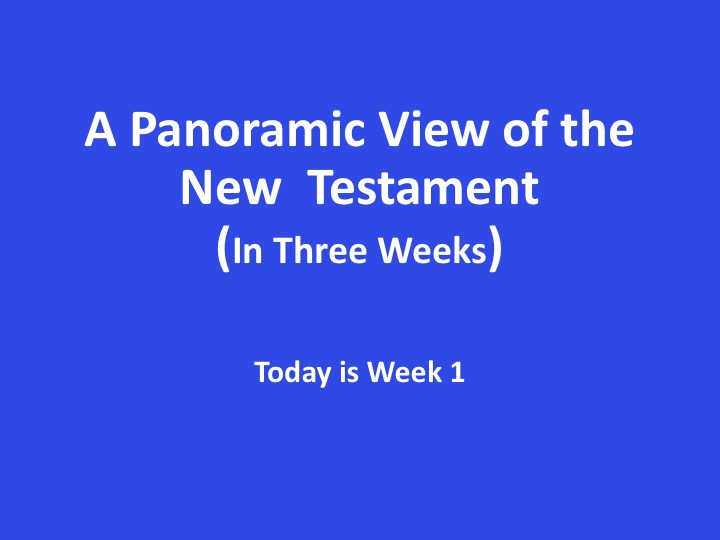
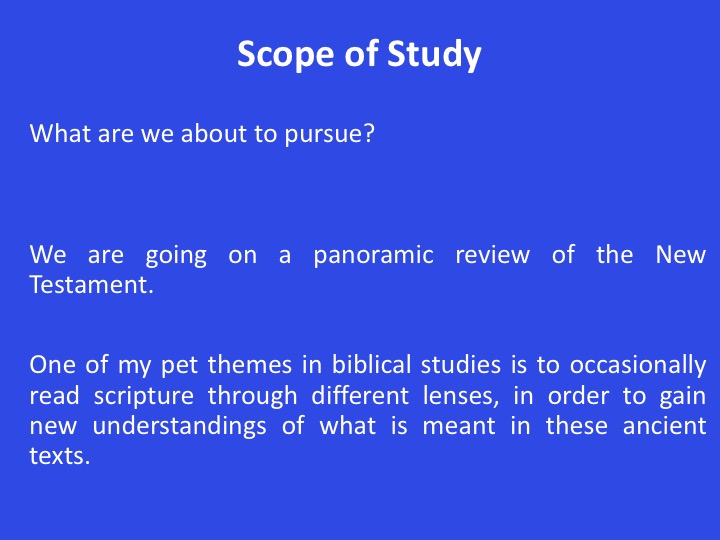
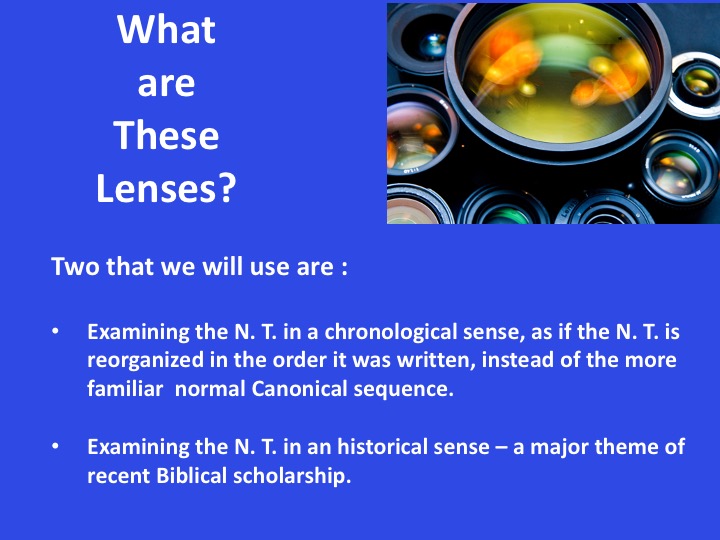
Examining the New Testament
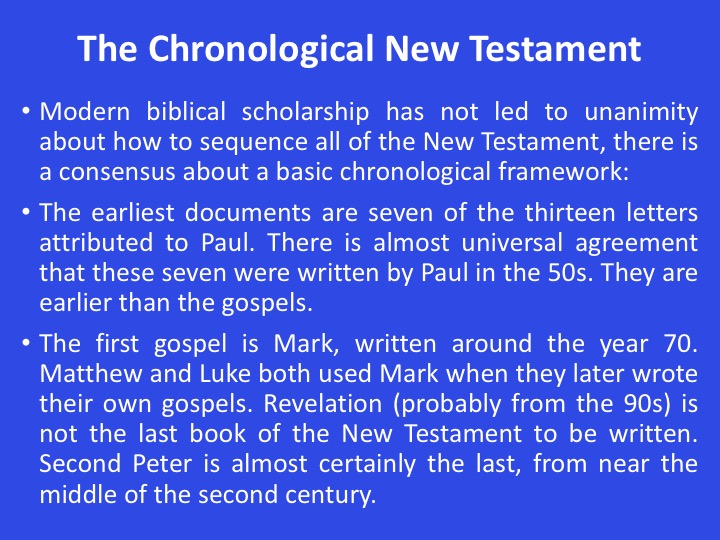
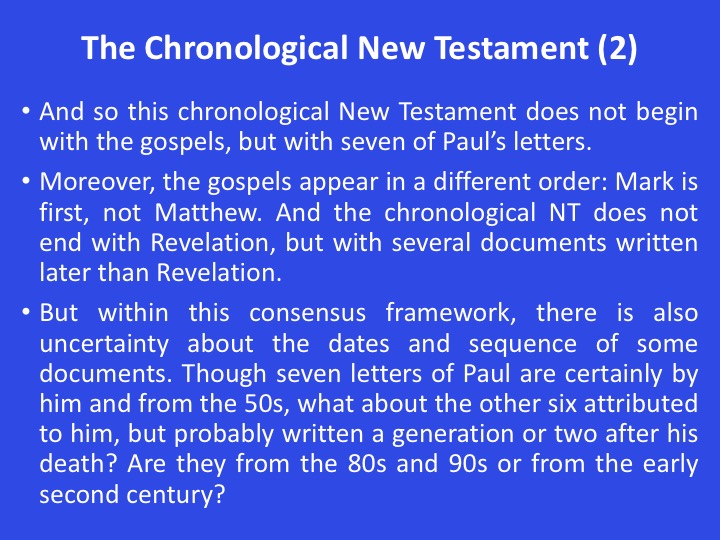
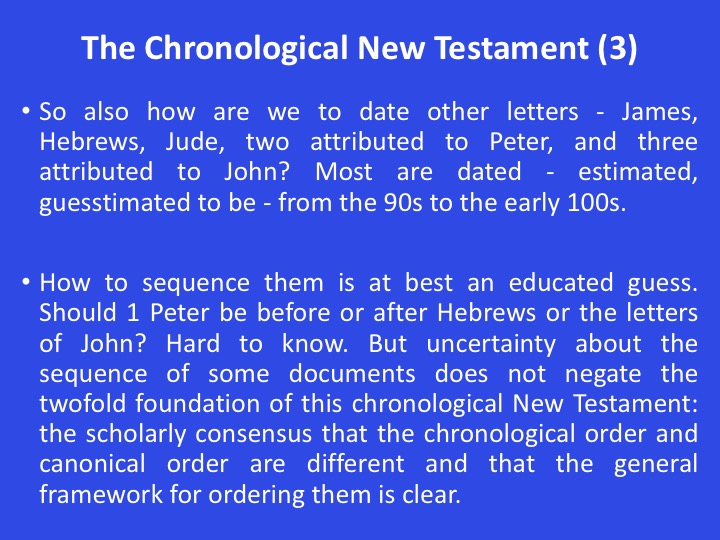
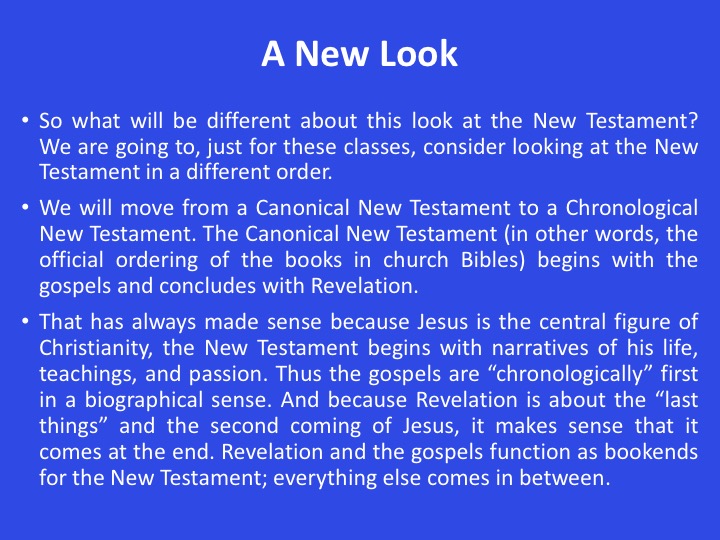
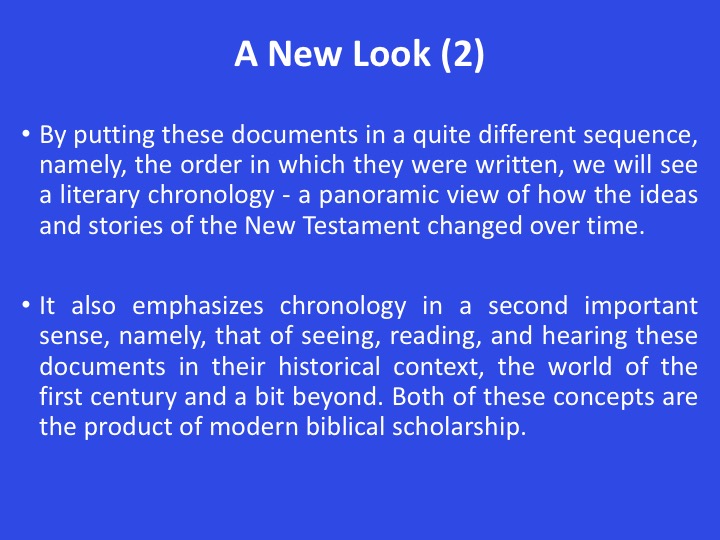
Examining the New Testament
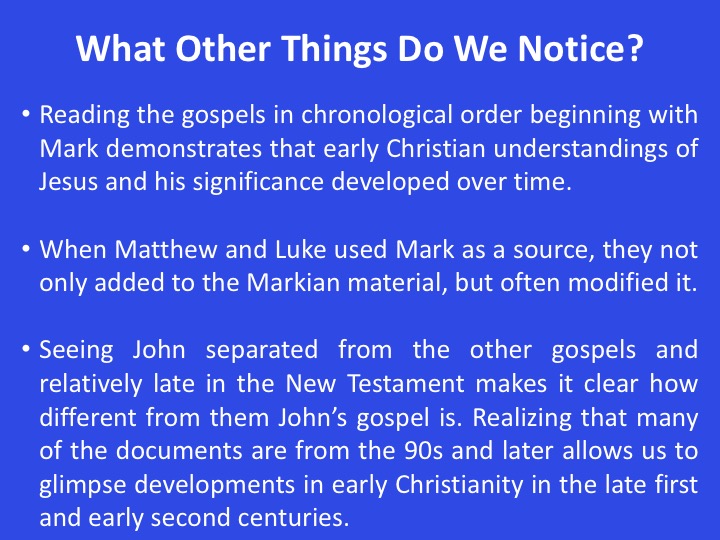
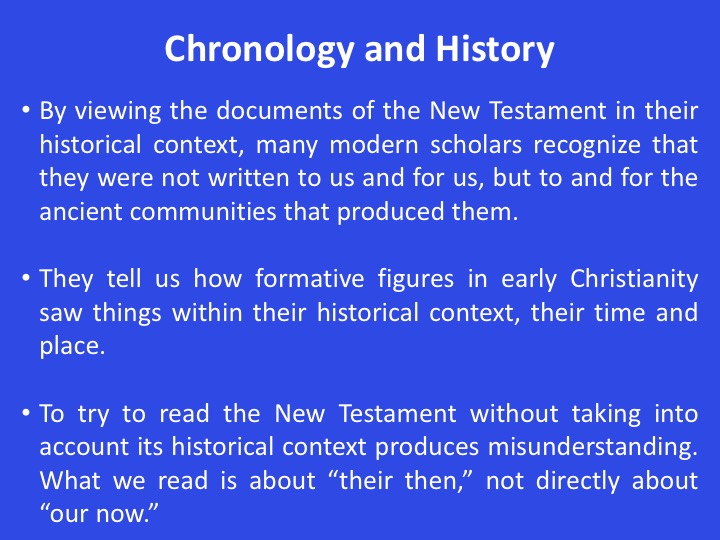
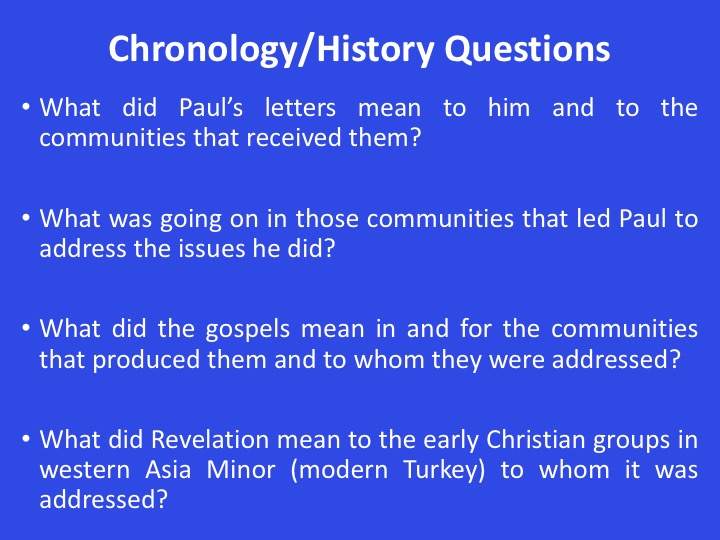
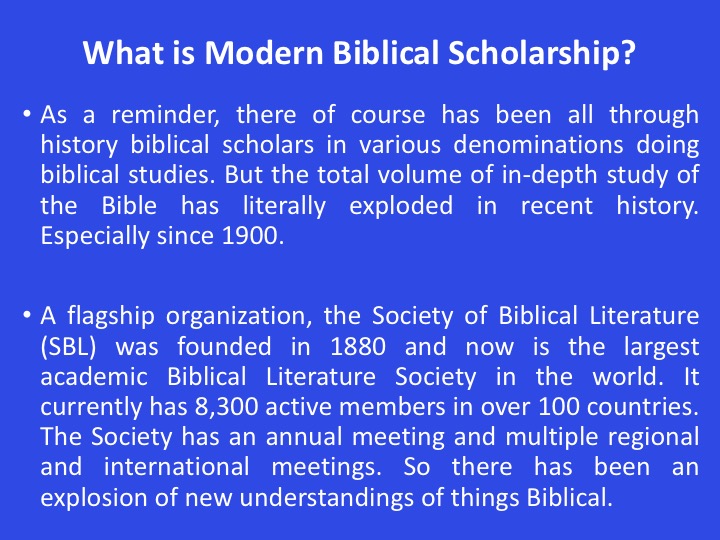
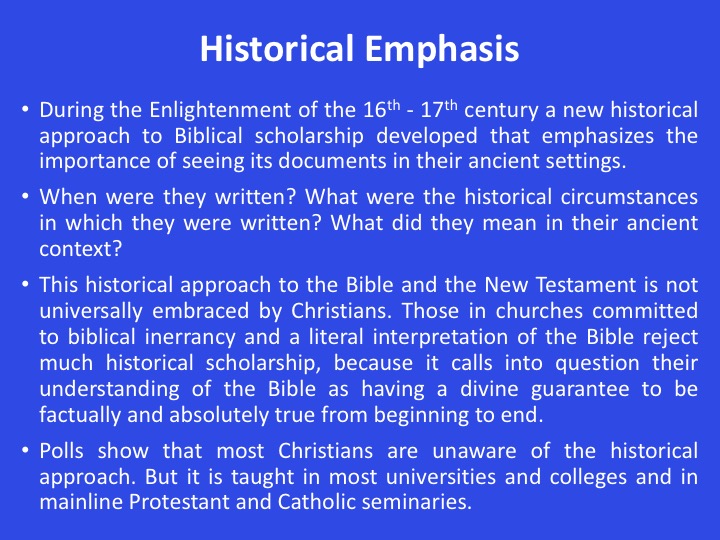
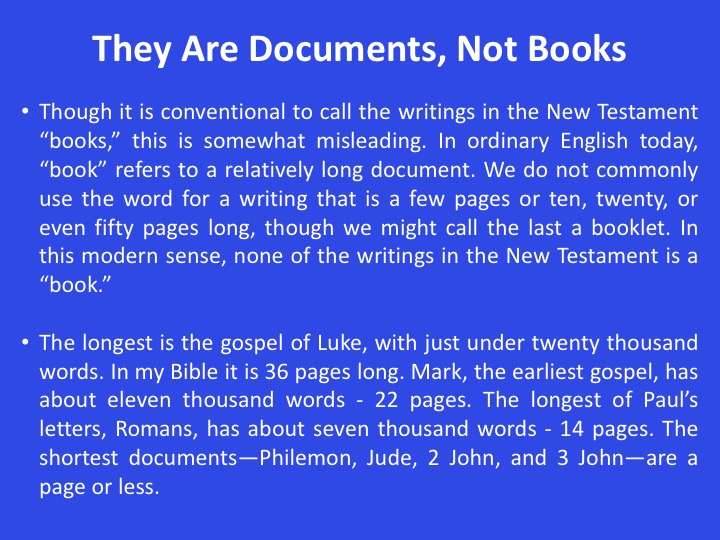
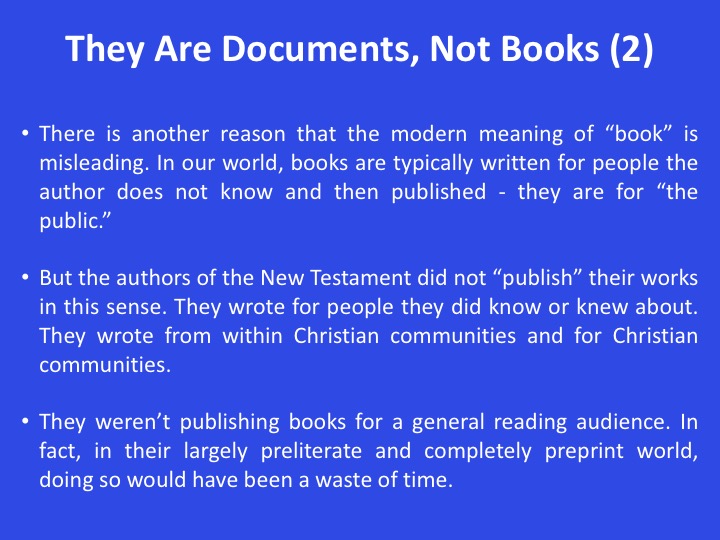
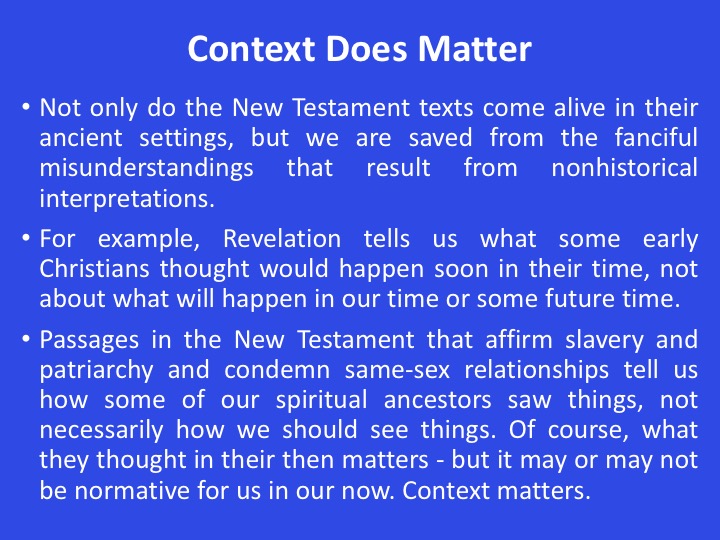
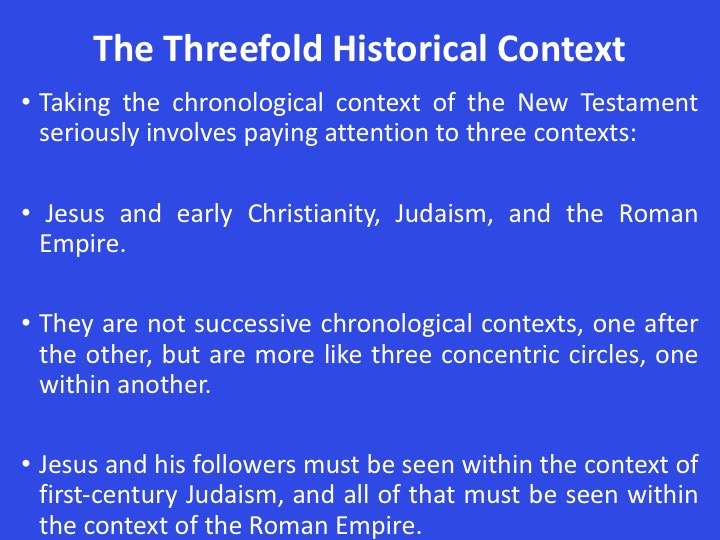
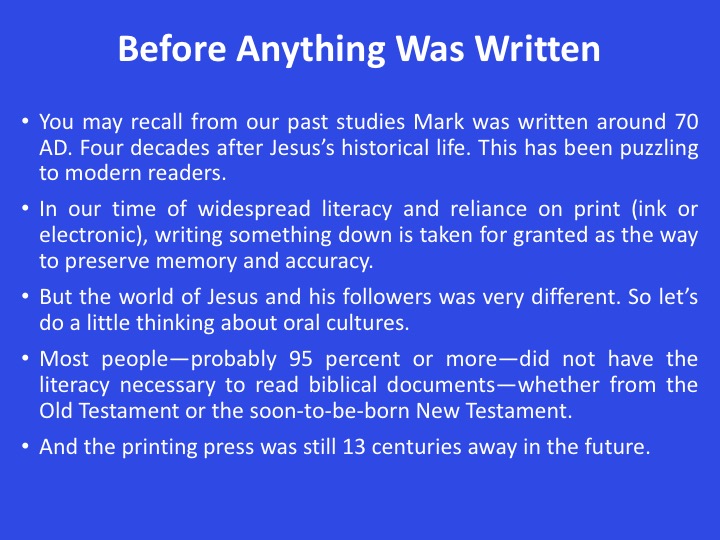
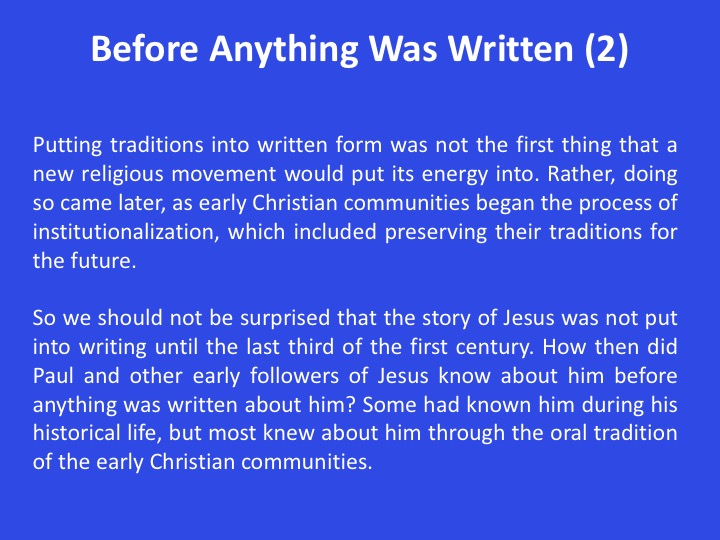
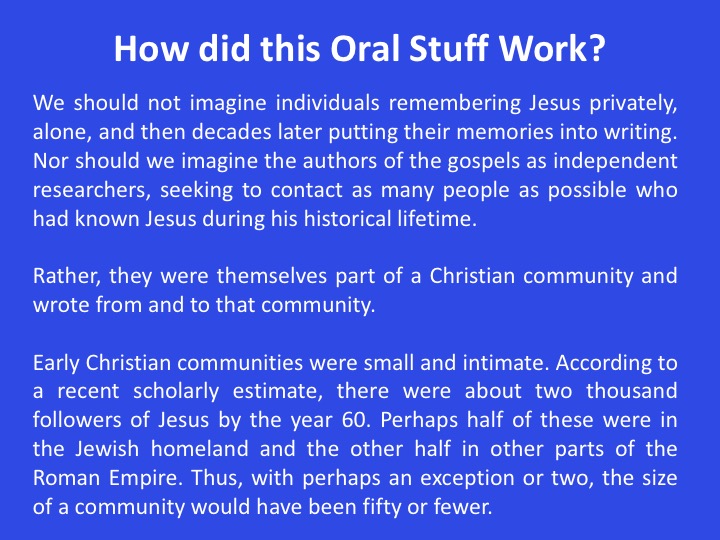
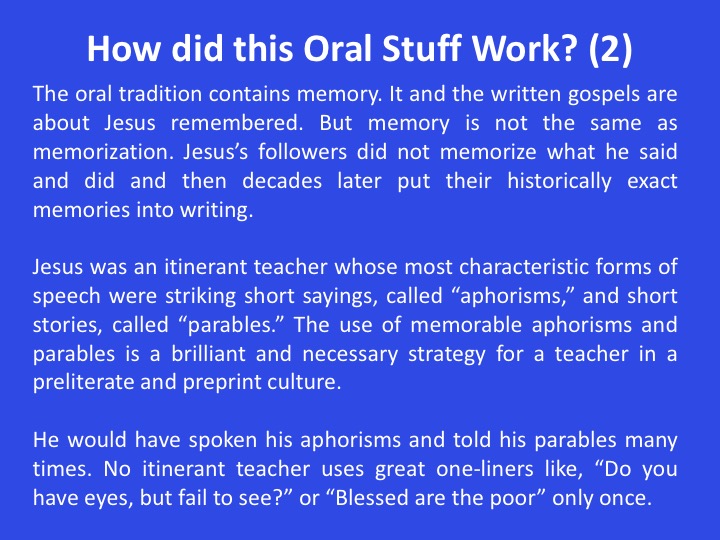
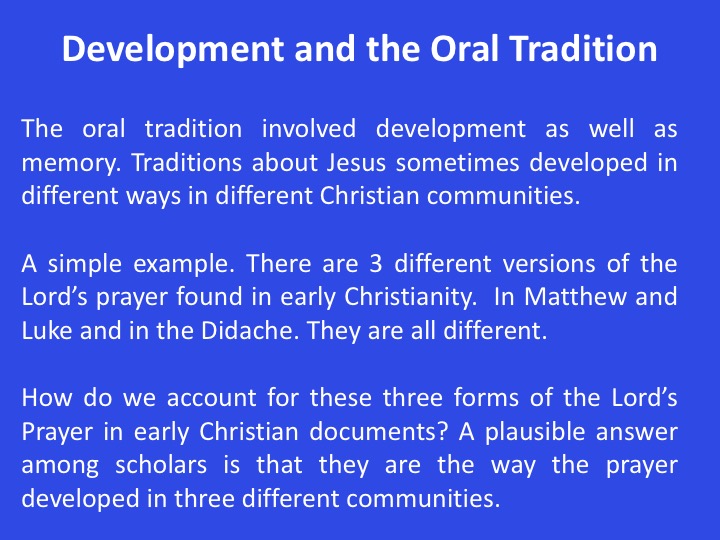
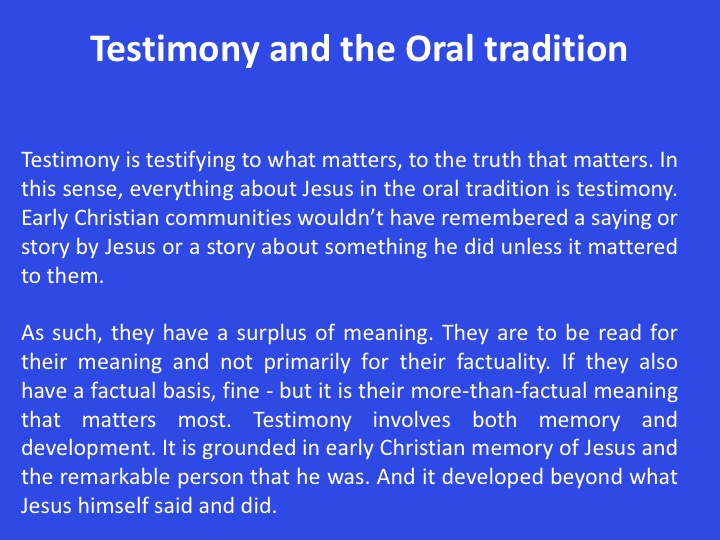
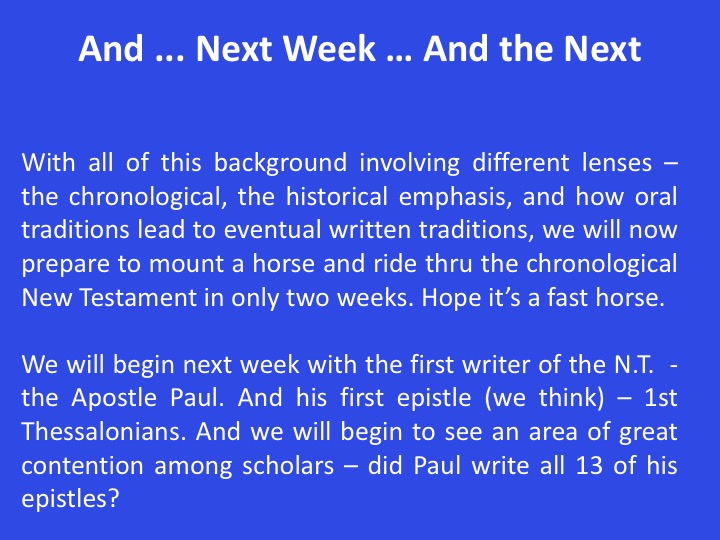

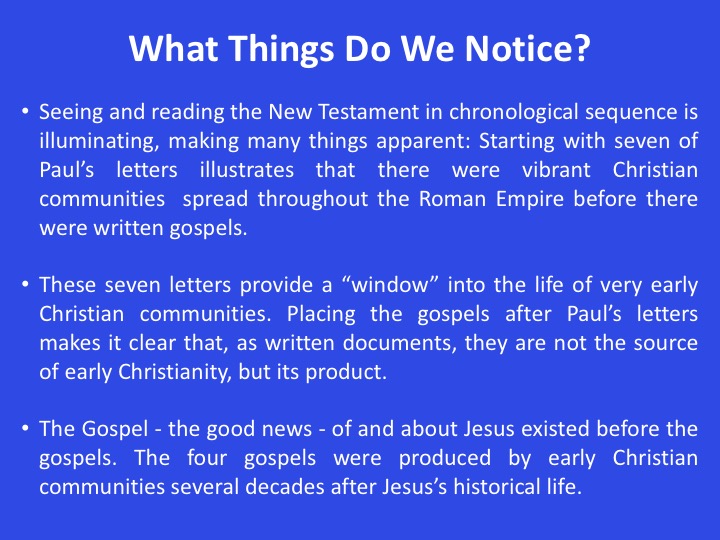
Examining the New Testament Lesson 1
Links
< Home Page > < Examining N.T. Menu > < Top of Page >
Examining the New Testament 1. - The Text
(In Three Weeks)
We are going over the next three weeks to take a new look at the New Testament. I will try to summarize as much as possible many of the interesting learnings of modern biblical scholarship. As a reminder, there of course has been all through history biblical scholars in various denominations doing biblical studies. But the total volume of in-depth study of the Bible has literally exploded in recent history. But reviews I have made of pollsters such as Pew Research, the Barna Group, and Gallup have revealed that modern Christians in America are embarrassingly unaware not only of any of this recent work, but of many things about the Bible.
So I am going to suggest a new way we can take a quick look. (and 3 weeks is definitely a quick look at what is in the New Testament.
Two that we will use are :
• Examining the New Testament in a chronological sense, as if the N. T. is reorganized in the order it was written, instead of the more familiar normal Canonical sequence. • Examining the New Testament in an historical sense – a major theme of recent Biblical scholarship. And there will be other lenses, as we will explain as we proceed.
What is a Chronological New Testament?
Modern biblical scholarship has not led to unanimity about how to sequence all of the New Testament, but there is a consensus about a basic chronological framework:
The earliest documents are seven of the thirteen letters attributed to Paul. There is universal agreement that these seven were written by Paul in the 50s. They are earlier than the gospels.
The first gospel is Mark, written around the year 70. Matthew and Luke both used Mark when they later wrote their own gospels. Revelation (probably from the 90s) is not the last book of the New Testament to be written. Second Peter is almost certainly the latest, from near the middle of the second century.
The Chronological New Testament (2)
And so this chronological New Testament does not begin with the gospels, but with seven of Paul’s letters. Moreover, the gospels appear in a different order: Mark is first, not Matthew. And the chronological NT does not end with Revelation, but with several documents written later than Revelation. But within this consensus framework, there is also uncertainty about the dates and sequence of some documents. Though seven letters of Paul are certainly by him and from the 50s, what about the other six attributed to him, but probably written a generation or two after his death? Are they from the 80s and 90s or from the early second century?
The Chronological New Testament (3)
So also how are we to date other letters—James, Hebrews, Jude, two attributed to Peter, and three attributed to John? Most are dated—estimated, guesstimated to be—from the 90s to the early 100s.
How to sequence them is at best an educated guess. Should 1 Peter be before or after Hebrews or the letters of John? Hard to know. But uncertainty about the sequence of some documents does not negate the twofold foundation of this chronological New Testament: the scholarly consensus that the chronological order and canonical order are different and that the general framework for ordering them is clear.
New Look
So what will be different about this look at the New Testament? We are going to, just for these classes, consider looking at the New Testament in a different order.
We will move from a Canonical New Testament to a Chronological New Testament. The Canonical New Testament (in other words, the official ordering of the books in church Bibles) begins with the gospels and concludes with Revelation.
That has always made sense because Jesus is the central figure of Christianity, the New Testament begins with narratives of his life, teachings, and passion. Thus the gospels are “chronologically” first in a biographical sense. And because Revelation is about the “last things” and the second coming of Jesus, it makes sense that it comes at the end. Revelation and the gospels function as bookends for the New Testament; everything else comes in between.
What Things Do We Notice?
Seeing and reading the New Testament in chronological sequence is illuminating, making many things apparent: Starting with seven of Paul’s letters illustrates that there were vibrant Christian communities spread throughout the Roman Empire before there were written gospels.
These seven letters provide a “window” into the life of very early Christian communities. Placing the gospels after Paul’s letters makes it clear that, as written documents, they are not the source of early Christianity, but its product.
The Gospel—the good news—of and about Jesus existed before the gospels. They were produced by early Christian communities several decades after Jesus’s historical life.
What Other Things Do We Notice?
Reading the gospels in chronological order beginning with Mark demonstrates that early Christian understandings of Jesus and his significance developed over time.
When Matthew and Luke used Mark as a source, they not only added to the Markian material, but often modified it.
Seeing John separated from the other gospels and relatively late in the New Testament makes it clear how different from them John’s gospel is. Realizing that many of the documents are from the 90s and later allows us to glimpse developments in early Christianity in the late first and early second centuries.
Chronology and History
By viewing the documents of the New Testament in their historical context, we recognize that they were not written to us and for us, but to and for the ancient communities that produced them. They tell us how formative figures in early Christianity saw things within their historical context, their time and place. To try to read the New Testament without taking into account its historical context produces misunderstanding. What we read is about “their then,”not directly about “our now.”
Chronology / History Questions
What did Paul’s letters mean to him and to the communities that received them?
What was going on in those communities that led Paul to address the issues he did?
What did the gospels mean in and for the communities that produced them and to whom they were addressed?
What did Revelation mean to the early Christian groups in western Asia Minor (modern Turkey) to whom it was addressed?
What is Modern Biblical Scholarship?
We are going over the next three weeks to take a new look at the New Testament. I will try to summarize as much as possible many of the interesting learnings of modern biblical scholarship. As a reminder, there of course has been all through history biblical scholars in various denominations doing biblical studies. But the total volume of in-depth study of the Bible has literally exploded in recent history. Especially since 1900. A flagship organization, the Society of Biblical Literature (SBL) was founded in 1880 and now is the largest academic Biblical Literature in the world. It currently has 8, 300 active members in over 100 countries. The Society has an annual meeting and multiple regional and international meetings. So there has been an explosion of new understandings of things Biblical.
Historical Emphasis
Now let us talk about this lenses mentioned earlier – historical emphasis in Bible scholarship. During the Enlightenment of the 16th - 17th century a new historical approach to Biblical scholarship developed that emphasizes the importance of seeing its documents in their ancient settings. When were they written? What were the historical circumstances in which they were written? What did they mean in their ancient context?
This historical approach to the Bible and the New Testament is not universally embraced by Christians. Those in churches committed to biblical inerrancy and a literal interpretation of the Bible reject much historical scholarship, because it calls into question their understanding of the Bible as having a divine guarantee to be factually and absolutely true from beginning to end. Polls show that most Christians are unaware of the historical approach. But it is taught in most universities and colleges and in mainline Protestant and Catholic seminaries. Which includes our seminaries.
They Are Documents, Not Books
Though it is conventional to call the writings in the New Testament “books,” this is somewhat misleading. In ordinary English today, “book” refers to a relatively long document. We do not commonly use the word for a writing that is a few pages or ten, twenty, or even fifty pages long, though we might call the last a booklet. In this modern sense, none of the writings in the New Testament is a “book.” The longest is the gospel of Luke, with just under twenty thousand words. Depending upon type size, modern books typically have about four to five hundred words per page. Thus Luke is fewer than fifty pages—and even less in the small print of most Bibles. Mark, the earliest gospel, has about eleven thousand words—fewer than thirty pages. The longest of Paul’s letters, Romans, has about seven thousand words—around fifteen pages. The shortest documents—Philemon, Jude, 2 John, and 3 John—are a page or less.
They Are Documents, Not Books (2)
There is another reason that the modern meaning of “book” is misleading. In our world, books are typically written for people the author does not know and then published—they are for “the public.”
But the authors of the New Testament did not “publish” their works in this sense. They wrote for people they did know or knew about. They wrote from within Christian communities and for Christian communities.
They weren’t publishing books for a general reading audience. Indeed, in their largely preliterate and completely preprint world, doing so would have been a waste of time.
Context Does Matter
Not only do the New Testament texts come alive in their ancient settings, but we are saved from the fanciful misunderstandings that result from non-historical interpretations. For example, the book of Revelation tells us what some early Christians thought would happen soon in their time, not about what will happen in our time or some future time. Passages in the New Testament that affirm slavery and patriarchy and condemn same-sex relationships tell us how some of our spiritual ancestors saw things, not necessarily how we should see things. Of course, what they thought in their then matters—but it may or may not be normative for us in our now. Context matters.
The Threefold Historical Context
Taking the chronological context of the New Testament seriously involves paying attention to three contexts: Jesus and early Christianity, Judaism, and the Roman Empire. They are not successive chronological contexts, one after the other, but are more like three concentric circles, one within another. Jesus and his followers must be seen within the context of first-century Judaism, and all of that must be seen within the context of the Roman Empire.
Before Anything Was Written
You may recall from our past studies that the first Gospel was written around 70 AD. This was 4 decades after Jesus’s historical life. This has been puzzling to modern readers. But the world of Jesus and his followers was very different. So let’s do a little thinking about oral cultures.
In our time of widespread literacy and reliance on print (ink or electronic), writing something down is taken for granted as the way to preserve memory and accuracy.
Most people—probably 95 percent or more—did not have the literacy necessary to read biblical documents—whether from the Old Testament or the soon-to-be-born New Testament. And the printing press was still 13 centuries away in the future.
Before Anything Was Written (2)
Putting traditions into written form was not the first thing that a new religious movement would put its energy into. Rather, doing so came later, as early Christian communities began the process of institutionalization, which included preserving their traditions for the future.
So we should not be surprised that the story of Jesus was not put into writing until the last third of the first century. How then did Paul and other early followers of Jesus know about him before anything was written about him? Some had known him during his historical life, but most knew about him through the oral tradition of the early Christian communities.
How did this Oral Stuff Work?
We should not imagine individuals remembering Jesus privately, alone, and then decades later putting their memories into writing. Nor should we imagine the authors of the gospels as independent researchers, seeking to contact as many people as possible who had known Jesus during his historical lifetime.
Rather, they were themselves part of a Christian community and wrote from and to that community, even as they may also have thought that what they wrote might be of importance beyond their community.
Early Christian communities were small and intimate. According to a recent scholarly estimate, there were about two thousand followers of Jesus by the year 60. Perhaps half of these were in the Jewish homeland and the other half in other parts of the Roman Empire. Thus, with perhaps an exception or two, the size of a community would have been fifty or fewer.
Development and the Oral Tradition
The oral tradition involved development as well as memory. Traditions about Jesus sometimes developed in different ways in different Christian communities.
A simple example. There are 3 different versions of the Lord’s prayer found in early Christianity. In Matthew and Luke and in the Didache. They are all different.
How do we account for these three forms of the Lord’s Prayer in early Christian documents? A possible answer is that Jesus taught the three different forms on three different occasions, and those who were at any one session memorized the form they heard. A more plausible answer is that they are the way the prayer developed over time in three different communities.
Testimony and the Oral Tradition
Testimony is testifying, witnessing, to what matters, to the truth that matters. In this sense, everything about Jesus in the oral tradition is testimony. Early Christian communities wouldn’t have remembered a saying or story by Jesus or a story about something he did unless it mattered to them.
As such, they have a surplus of meaning. They are to be read for their meaning and not primarily for their factuality. If they also have a factual basis, fine—but it is their more-than-factual meaning that matters most. Testimony involves both memory and development. It is grounded in early Christian memory of Jesus and the remarkable person that he was. And it developed beyond what Jesus himself said and did.
And …. Next Week…And the Next
With all of this background involving different lenses – the chronological, the historical emphasis, and how oral traditions lead to eventual written traditions, we will now prepare to mount a horse and ride thru the chronological New Testament in only two weeks. Hope it’s a fast horse.
We will begin next week with the first writer of the N.T. - the Apostle Paul. And his first epistle (we think) – 1st Thessalonians. And we will begin to see an area of great contention among scholars – did Paul write all 13 of his epistles?